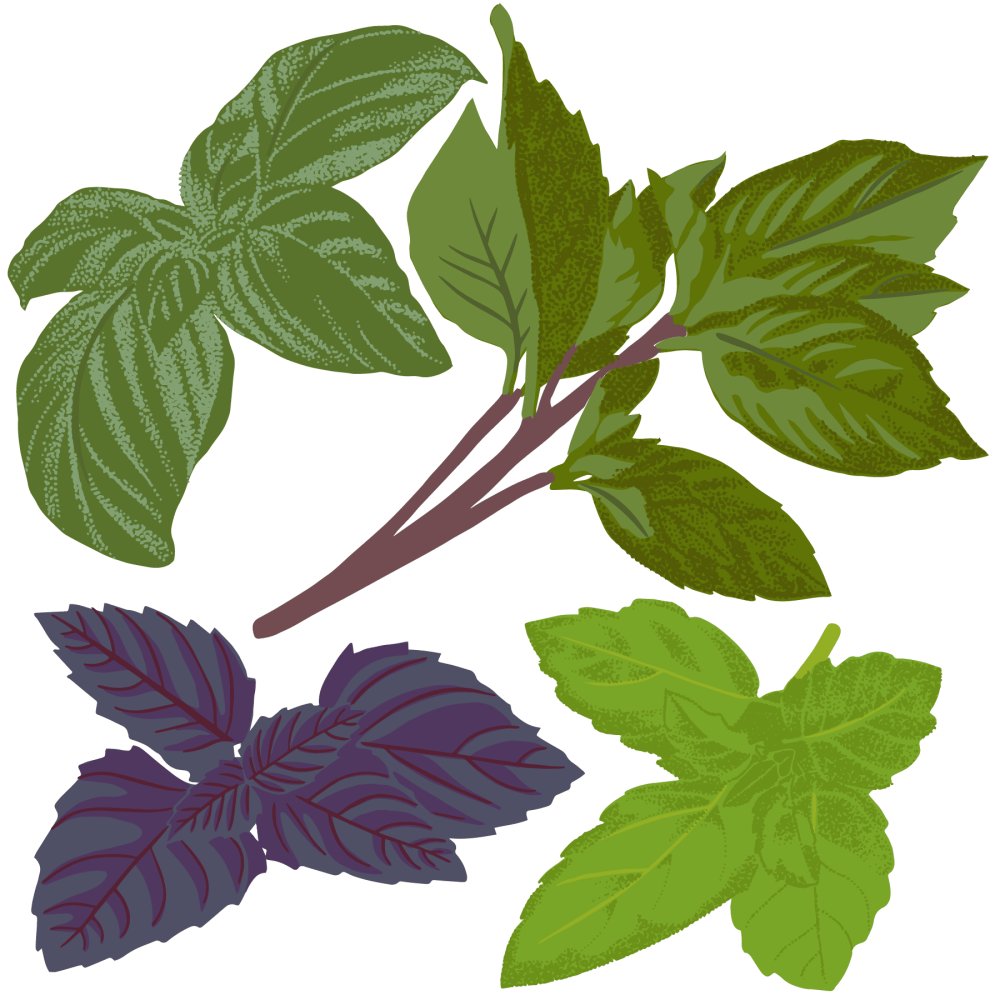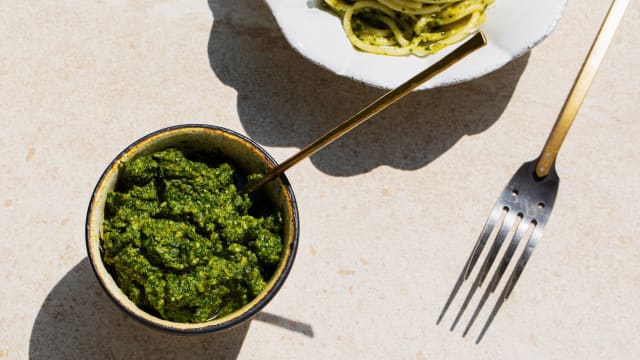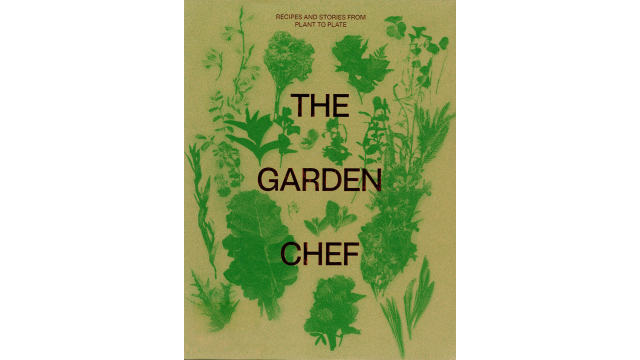Basil

Latin name: Ocimum basilicum, O. basilicum var. thyrsiflora (Thai basil), and O. × citriodorum (lemon basil)
Uses: herb, seeds
What is basil?
This fragrant mint-family herb is as multifaceted as it is tender, equally at home on a pizza and a bowl of phở. There’s a perfect cultivar for every purpose. Because basil is not at all cold-tolerant, there are few herbs more evocative of summer — especially given its profound rapport with tomatoes. Once harvested it has a short shelf life, so you’re better off keeping a potted basil plant on your windowsill.
Why is basil healthy?
Though basil is mostly water, the remainder is nutrient-rich: full of vitamins (A and K), minerals like manganese, calcium, iron, and magnesium, and even protein and omega-3 fatty acids. Besides its beautifully complex flavor, basil may also make your mouth happy due to purported antibacterial and anti-inflammatory properties. Tulsi, or holy basil, is traditionally used in India for fever, cold, cough, sore throat, respiratory problems, stress, mouth infections, skin & teeth issues, and headaches.
What does basil taste like?
Fresh basil gets its spicy-floral and green flavor from linalool and eugenol, and a slight licorice-y top note from estragole (also found in tarragon, and more pronounced in Thai basil). Purple and opal basil have a slightly cinnamon-clove fragrance. The larger “‘Lettuce Leaf”’ variety has a milder flavor still, whereas lemon basil has citrusy notes. Most of the aromatic qualities are lost in dried basil, so use fresh whenever you can.
How do I use basil?
Pesto, the pride of Italy’s Liguria region, is a seamless blend of basil, garlic, pine nuts, Parmesan, and olive oil. Basil has an affinity for eggs, too (which also love tomatoes and cheese) — stir a chiffonade into beaten eggs for omelets and quiches. Because it’s so good with creamy cheeses, you can add whipped ricotta or mascarpone to beaten eggs to make a savory tart (this is really good with mushrooms). Basil also never met a noodle it couldn’t hang with, but basil can do so much more than Italian.
Thai basil is a standard addition to the herb platter that accompanies a variety of Vietnamese soups (especially phở and bún bò Huế), rolled rice noodles (bánh cuốn), and salad rolls (gỏi cuốn). True to its name, it’s also used in Thai cooking. Add it to pumpkin red curry and to spicy fried eggplant (pad makhua).
Similar to chia seeds, basil seeds have a mucilaginous coating that’s activated in liquid. You can add them to South and Southeast Asian desserts and beverages to give a boba-y jelly consistency. Try using them with coconut or almond milk and diced fruit for a no-cook pudding.
What does basil pair well with?
If you’ve ever enjoyed the sublimity of a pizza Margherita or caprese salad, you know that Italian basil is in a committed relationship with tomatoes and mozzarella. But basil’s true ride-or-die is garlic. Thai basil — logically — loves cilantro, ginger, and other Southeast Asian aromatics. On the sweet side, try adding a few lemon basil leaves to a batch of peach jam and see how well they get along.
Where does basil grow?
Though it’s commonly associated with Italian cuisine and is grown globally, basil originates in the tropical regions of India, Southeast Asia, and central Africa. All varieties need full sun and warmth to thrive, and will die at first frost, but are otherwise easy to grow. You can root stem cuttings (how bagged basil is sold in grocery stores) in a glass of water and then pot them up once they’ve grown roots. Snip off flowering stems as soon as they emerge to prolong the plant’s life.
How to buy basil:
Look for bright, shiny leaves that aren't wilting or turning brown. Keep it in a bag in the fridge, but try to use it within a few days for best flavor.
Fun basil fact:
Tulsi is sacred to Hindus and often planted at temples and in courtyards. In Greek (and several other Southern European) Orthodox Churches, basil sprigs are used to sprinkle holy water.






